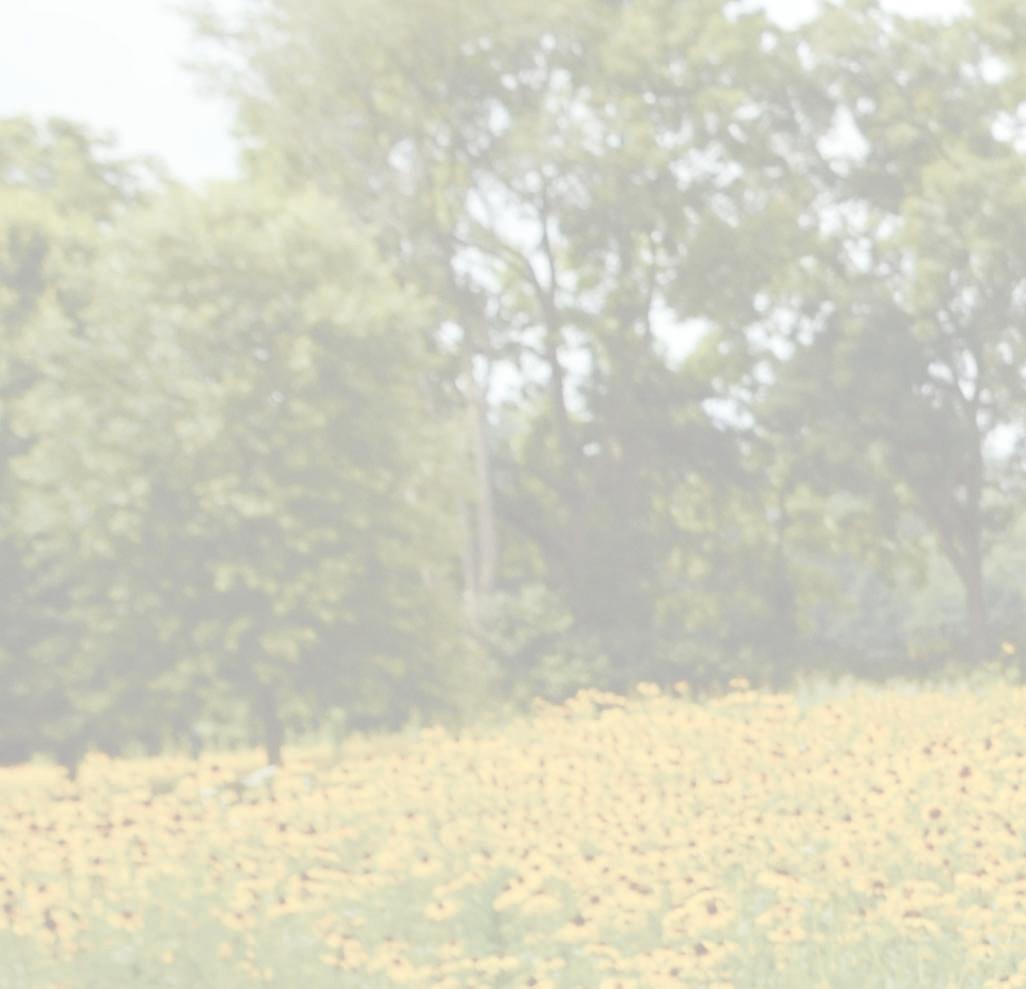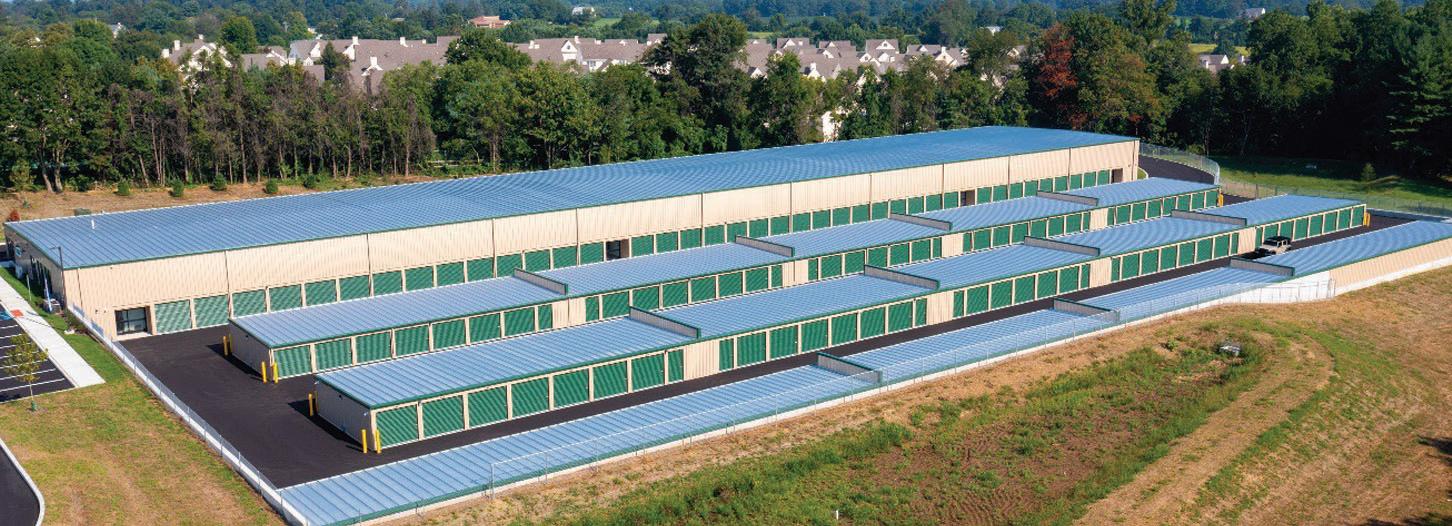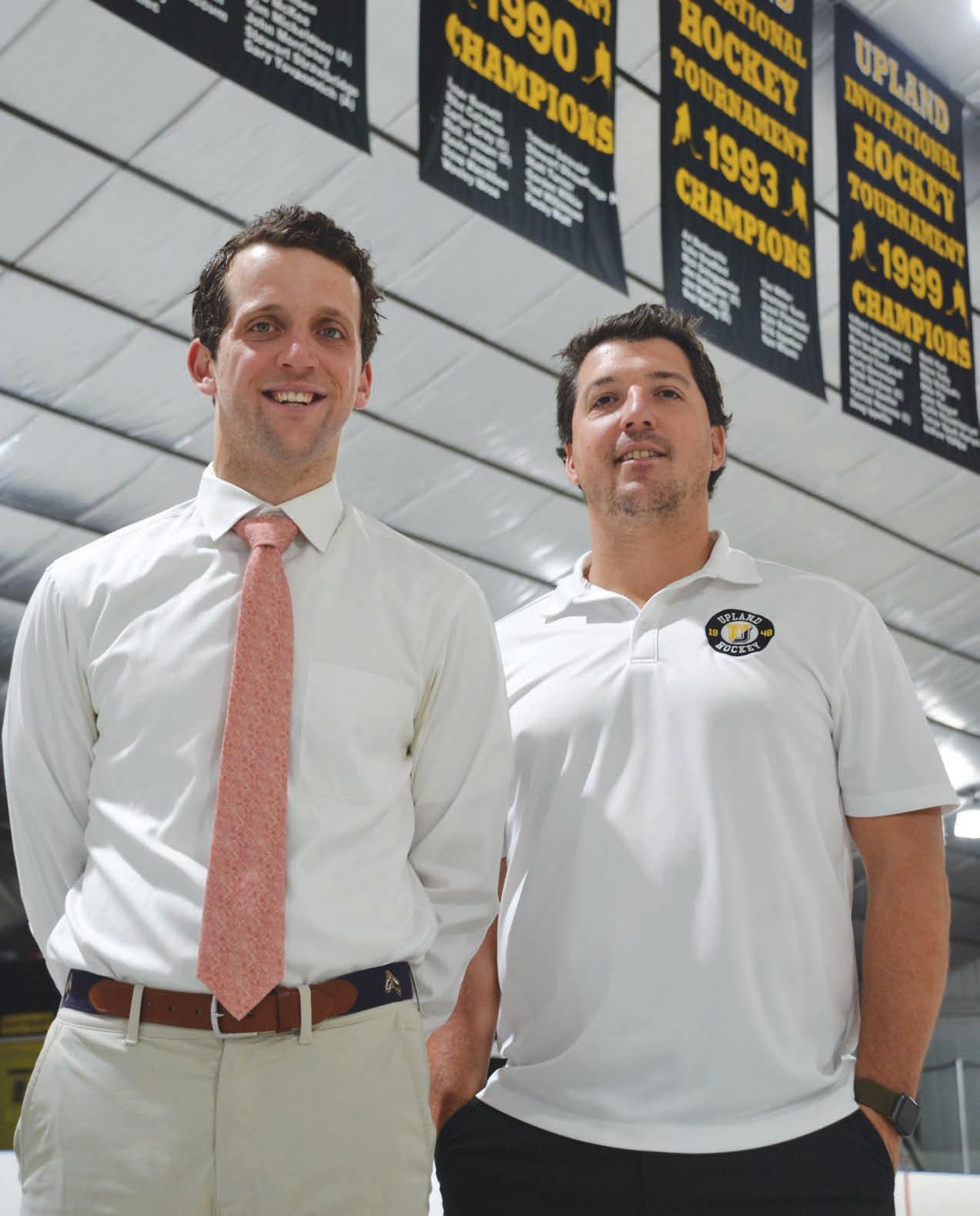

Landenberg Life











The
ying machines over New Garden
Ma Magazinazine Mi

























Landenberg Life Fall/Winter 2024
Letter from the Editor:
Earlier this year, the New Garden Flying Field hosted the Evening of Aviation Air Show, an electric display of aircraft demonstrations, fleets of antique cars and monster trucks, family fun activities, food and craft vendors and live music. It was one of the best events of the summer in this area, and in this edition of Landenberg Life, our photo essay features the magnificent flying machines over New Garden that were on display during the air show.
In this issue, we profile Jon Martin, the general manager of the New Garden Flying Field, who, inspired by his own dreams, has brought vision, events and education to the airport.
This area is fortunate to have people who care about preserving and protecting farmland and open space. Fully funded by two grants, London Britain Township is converting a once-mowed field into a stunning landscape, with two more lawn-to-meadow restorations to follow. As a result of this funding, Nichol Park in Landenberg is being transformed into a real gem for local residents.
The boys’ hockey and girls’ hockey programs at Upland Country Day School have created a long legacy, defined by achieving success both on the rink and in the classroom. Recently, Landenberg Life visited the campus to speak with boys’ varsity coach and assistant director of athletics Ben Weston and girls’ varsity coach and director of athletics Taylor Swarter to learn about the school’s mission, the goal of the programs and the mystique of the Cleveland Hockey Rink.
We also profile Julie Garey, a Landenberg resident and reiki master. Garey has been practicing reiki and mediumship for five years, and started The Reiki Medium four years ago in her Landenberg home and she currently also practices at The Three Peaces in Wilmington.
Landenberg Life also shines a spotlight on the New London Counseling Center, which is helping to transform lives, restore families and build strong communities through private and public contributions and the compassion of its team.
We hope you enjoy these stories in this issue of Landenberg Life. Please contact us with comments and suggestions for future stories. In the meantime, we look forward to the next issue of Landenberg Life, which will arrive in the spring of 2025.


Sincerely,
Cover Design: Tricia Hoadley
Cover Photo: Jim Coarse
|Landenberg People|
Recently, a young writer spe with Landenberg-based Being read: Experie in a world of skepti
Being read: Experie in a world of skepti
By Gabbie Burton Contributing Writer
I often view my faith and open-mindedness to the world as a positive thing, for the very reason that it allows me the freedom to try new things and meet new people without judgement.
However, this blind faith often runs contradictory to my emerging career as a professional journalist, where it’s penciled into the general job description to be a skeptic and question nearly everything. To be sure, I certainly do but in some rare and exciting instances, suspending disbelief may yield better results than remaining preoccupied with skepticism.
This is how I recently felt when I had the opportunity to profile a Landenberg resident and reiki master as well as receive a reiki and mediumship reading from her. Julie Garey, who has been practicing reiki and mediumship for five years, started The Reiki Medium four years ago in her Landenberg home and currently practices at The Three Peaces in Wilmington. Although her business is still relatively new, Garey explained to me that she has always had “feelings” of other energies when she was young, and that she would sometimes hear guiding messages.
“I was always interested in mediumship, but I was always too scared to really look into it,” Garey said.
Although guided by her strong sense of intuition, it wasn’t
until she received a medium reading for her 40th birthday five years ago that she decided to pursue the practice. Garey visited a local medium who during their session spoke about Garey’s grandfather, telling Garey that her grandfather would visit her youngest son and play trains with him. After the session, Garey showed her son a photograph of her grandfather and asked if he recognized the man.
“I said, ‘Do you know who that is?’ and he said, ‘Yeah. He plays trains with me,’” she said. “My son has never met my grandfather in his entire life.”
This experience gave Garey the motivation she needed to start developing her own skills as a medium that began by attending meditation and reiki classes where she realized she could hear messages like she used to when she was younger. It has led to additional education that has included classes on mediumship and healing touch.
(Translated, “Reiki” is an energy healing practice where the practitioner places their hands just above the body of the receiver in order clear out stagnant and negative energy and move in positive and healing energy. “Mediumship” is the practice of connecting with spirit guides and deceased loved ones to communicate messages they may have from the other side.)
Garey gave me the full attention of those skills in a session that combined reiki healing with messages and a medium reading. Suddenly, my original intention to write a profile
ent an enlightening session
reiki master Julie Garey
encing spiritualism icism
encing spiritualism icism
about Julie Garey became in part, a profile about me.
As I got comfortable on the table, Garey played music that set a serene vibe for the session. To get started, she began by moving a pendulum over my chakras -- the energetic points of the body residing at the crown (top of head), third eye, throat, heart, solar plexus, sacral, and root (bottom of spine). Each chakra has its own purpose and rules over different spiritual, emotional, and even physical functions.
Early in the session, Garey determined that my throat and sacral were blocked, meaning, she said, that I had concerns in communication and health and wellness, respectively. As soon as Garey said she was going to check for blockages in the chakras, I took a mental bet on it being the exact two she said it was.
“Kind of funny, because you’re a reporter,” Garey said. For someone who has chosen a career in writing and communication, I do have a surprising number of communication problems.
Garey moved her hands in the space above my body and I questioned whether I could feel it. When she covered my third eye, I felt an ache form between my eyes that wanted to move up, like it was being pulled out of skull by her hands. I suddenly felt my throat become sore and the same upwards drag, and when she moved her hands over my heart, I noticed that my breathing had shifted into my chest rather than in my stomach.
Continued on Page 10

Courtesy photos
Julie Garey of The Reiki Medium.
Reiki master Julie Garey
Continued from Page 9
I questioned whether this was the healing energy working or if my focus had merely shifted to each spot as she worked her way down. I felt relaxed and comfortable, and I chose to trust the process.
Trust, as it turns out, is a key factor in the energy work Garey performs. If a reiki patient chooses resistance, there is a likely chance that they will not experience any of the benefits of the practice.
“It’s like having a three-way conversation,” Garey said. “If the person getting the reading is open, it’s going to go so much easier. If people refuse and don’t want to be read, I can’t read them.”
A bongo-playing spirit guide
Lucky for me, I am quite open which Garey confirms by checking my crown and third eye chakras, dealing with spiritual connection and intuition respectively. Having read tarot for six years, collected crystals, and studied my astrological birth chart so much you’d think I was getting my degree in it – I was all in on the experience. While I
didn’t always believe what I learned from those hobbies, I won’t ever refute the comfort, fun, and even the accuracies I found in them. Who am I to deny myself or anyone else those simple pleasures in an otherwise complicated reality? I wandered somewhere between waking and sleep while Garey finished the rest of the reiki session. Having worked through all the chakras, she then walked me through all the psychic and medium messages she gathered during the session. I apparently have an eccentric, bongo-playing spirit guide that was coming through for these messages.
“Your crown chakra was nice and open,” Garey told me. “They were telling me you were very adventurous and open when it comes to spiritualism.”
I’ll say this magazine profile is a testament to that.
Garey informed me that my heart chakra was open and free, and that my solar plexus indicated that I was a member of a close family with a mom, dad, and sister who were all connected to my root chakra, meaning that I most likely live with them. She also explained the blockages previously in my throat and sacral chakras.
Continued on Page 12








Reiki master Julie Garey
|Landenberg Life|
Continued from Page 10
“You’re very good at speaking for other people through journalism and other things but sometimes you hold back for yourself,” she said. “The sacral blockage showed health concerns the chakras wanted me to acknowledge.”
Garey clarified that reiki is not a diagnosis and does not replace traditional medicine. In fact, in addition to her energy healing work, Garey also works full time as a dietician and diabetes educator for ChristianaCare, and for her, healing doesn’t stop at the physical level.
“Healthy eating is healthy for the body, but reiki is really good for health of the mind,” Garey said.
We then moved into the medium portion of the session. Garey took a deep breath, centering herself as I similarly tried to keep myself in the right, open-minded mental space.
“In addition to the guide, there’s also been a dog who’s bouncing around,” Garey told me.
I gasp. This was immediately better than I was expecting.
Garey admits that pets are not frequently what comes through first, but this dog did, and that was when she began to describe my old dog Orry in appearance and personality: medium sized, brown, energetic, cuddly, and described as


“lucky.” She saw me around the age of 10 with him which is how old I was when we rescued him. He acknowledged me for my kindness and special connection to him, which I was happy to hear.
The other spirit to come through was an old woman -most likely a great grandmother -- although it wasn’t exactly clear what her relation was to me.
Continued on Page 14


In her practice, Garey incorporates a full range of healing methods.

Reiki master Julie Garey
Continued from Page 12
“They always come for a reason,” Garey said before telling me that this spirit shared with her that I was the creative one in the family (agreed) and encouraged me to travel but not without saving up first. Other messages included avoiding any possible drama that may come my way – all sage advice regardless of whether it’s coming from the living or the dead. A man also came forward to stand beside the woman but he didn’t have much to say.
I’ve been fortunate to not know many people who have died so I often don’t feel compelled or entitled to a mediumship reading, though I have had one prior to this. I recognize that for those struggling with loss, mediumship could understandably provide a great deal of comfort.
Evolving consciousness as a humanity
As our session ended, Garey and I continued to talk more about her practice, and while she admitted that at first, she was reluctant to be the subject of a profile because of the possible skepticism and judgement of nonbelievers, her husband encouraged her to move forward with the story.
Garey shared that although spiritual work may be easy to dismiss, it is a growing movement and earning more recognition; in fact, ChristianaCare offers classes on healing touch, which she describes as a form of reiki, showing how even traditional medicine is being influenced by these holistic practices as well. She said that she feels reiki is moving more and more to the mainstream.
“Our consciences are continuing to expand and because of that you’re going to see more healers coming out,” she said.
In our fast-paced and ever-changing world, I can see why people turn to things less tangible in order to cultivate faith and find comfort, and why practitioners like Garey continue to practice for good and positivity. I ask any skeptic, “Why not open yourself up, not just to spiritualism but to anything? As long as critical thinking, respect, and kindness are still centered in your life and daily practices, why not suspend disbelief and see what comes in?”
Who knows what you may find?
To learn more about Julie Garey and The Reiki Medium, visit www.thereikimedium.com.
















|Around Landenberg|

Fully funded by two grants, London Britain Township is converting a once-mowed field into a stunning landscape, with two more lawn-to-meadow restorations to follow
Nichol Park: Found money, made beauty

made beauty
By Richard L. Gaw Staff Writer
Something just wasn’t right – aesthetically, economically and environmentally.
For several years, Adam Brady, the supervisor of parks and open space for London Britain Township, would expend countless hours and gallons of costly petrol to hop aboard an 18-foot-wide township tractor and mow the entirety of Nichol Park in Landenberg, only to have to repeat the process a week or so later.
In 2022, Brady received information from township Secretary Carolyn Matalon about a lawn-to-meadow conversion program and grant opportunity that was available from the Pennsylvania Department of Conservation Resources (DCNR). He liked what he read, and soon after, he proposed the project to the Board of Supervisors Aileen Parrish, Brian Sachs and Bruce Yost, who supported the idea for a now fully-funded project -- thanks to nearly $100,000 in grants from the DCNR and Western Pennsylvania Conservancy – that has transformed nearly 12 acres of

Continued on Page 20


Photo by Richard L. Gaw
London Britain Township Supervisors Brian Sachs and Aileen Parrish and township supervisor of parks and open space Adam Brady at the newly-blossomed meadow at Nichol Park.

Nichol Park
Continued from Page 18
Nichol Park into a magnificent and natural garden of wildflowers and grassy trail paths. In addition, the township is also converting 1.8 acres in the Country Walk development off of Good Hope Road and 2.6 acres on a hillside in the Windsor development off of Chambers Rock Road.
The lawn-to-meadow projects are being installed and managed by Weeds, Inc., an Aston-based leader in providing vegetation management services for government, municipal, industrial, commercial and residential markets.
“This is the main reason I am on the board – to be able to work with my colleagues to create projects like this for the community,” Sachs said. “My family and I moved to Landenberg for the vistas and wildlife landscapes, so when it came time to make the decision whether to have Adam continue to mow this field or pursue a better opportunity, the choice was easy.”
By converting from a “turf” landscape to a “native plant” landscape, deep root systems improve soil health; increase water infiltration and reduce flooding; reduce carbon emissions; create diverse and colorful textures; and do not

require long-term maintenance. The result is what is now seen in the new and sprawling vista at Nichol Park: purple coneflowers, lanceleaf coreopsis, blackeyed susan, butterfly milkweed, purple lovegrass and dozens of other forms of plantings.
The overall design concept for the three projects -- overseen by Kelsey Mummert of the DCNR – began with plantings at all three locations last fall.
DCNR’s lawn-to-meadow project is part of a statewide, collaborative effort to convert two million acres of lawn throughout the Commonwealth to meadow gardens. As part of the initiative, several local agencies are partnering with the DCNR, including the Pa. Environment Council, the Brandywine Red Clay Alliance and the Chester Ridley Crum Watersheds Association, as well as various conservation districts.
To give Brady an understanding of the Nichol Park project’s projected blooming, DCNR projected a threeyear timeline from planting to full bloom, a response that
Continued on Page 22











Nichol Park
Continued from Page 20
|Landenberg Life|
came in the form of a rhyme and later, an unexpected surprise.
“They told me that in year one, it sleeps. In year two it creeps. In year three, it leaps,” Brady said. “In the early spring, I was discouraged, because it looked brown and weed like. Then we received a lot of rain and two weeks later, flowers began popping up everywhere, and a month after that, it started to become what we’re seeing today.”
Beautifying London Britain Township through DCNR’s lawn-to-meadow program is
Continued on Page 24


Photo by Richard L. Gaw
Grants from the Pennsylvania Department of Natural Resources and Conservation and the Western Pennsylvania Conservancy have funded the transformation of nearly 12 acres of Nichol Park into a natural garden of wildflowers and grassy trail paths.


Nichol Park
Continued from Page 22
not only a long-term decision, but also a contagious one that Supervisor Aileen Parrish is anxious to share with neighboring towns, municipalities and eligible homeowners who are looking to convert an acre of their own properties.
“We would be delighted to share all of this information, and we are hopeful that township officials and private residents approach us, and it’s important to reiterate that this project did not cost us anything,” she said. “It is beautiful in so many ways. It serves our environmental goals, it embraces wildlife and it conserves the groundwater.
“To create those opportunities in such a way as this becomes a gift to all of those who will enjoy it.”
Interested in converting your lawn to a meadow? To learn more about the Pennsylvania Department of Conservation and Natural and Resources’ lawn conversion program, visit www.dcnr.pa.gov/Conservation/Water.
Nichol Park is located at 1505 New London Road in Landenberg, Pa.
To contact Staff Writer Richard L. Gaw, email rgaw@chestercounty.com.





Photo by Richard L. Gaw
The DCNR project is also converting 1.8 acres in the Country Walk development and 2.6 acres in the Windsor development, both in Landenberg.

Ben Weston and Taylor Swarter
of the Upland Country Day School Hockey Program
The boys’ and girls’ hockey programs at Upland Country Day School have created a long legacy, defined by achieving success both on the rink and in the classroom. Recently, Landenberg Life visited the campus to speak with boys’ varsity Coach and Assistant Director of Athletics Ben Weston and girls’ varsity Coach and Director of Athletics Taylor Swarter to learn about the school’s mission, the goal of the programs and the mystique of the Cleveland Hockey Rink.
Landenberg Life: The development of an Upland Country Day School hockey player begins on the first day of school, and in addition to practice also includes team building and character building. Take the readers of Landenberg Life into that aspect of the program. What do you stress?
bring the same attitudes and outlook and perspective to the classroom, then we’re all going to grow.
As coaches, we can go oh-and-40, but we’re still going to have jobs if we are preparing our student-athletes for life after Upland. It’s not about wins and losses. It’s about student-athlete development, character and leadership. For our students, Upland is just the beginning, so we get to set a foundation for what we truly believe in.

Ben: We’re fortunate that we get to skate right away, and on the first day of school, we begin practice at 2:45 p.m., which most high school programs are not afforded. We piggyback off the school’s character mission: we want wellrounded student-athletes with the emphasis on ‘student’ first. If we can have good people on the rink and have them
Talk about how the relationship works between the hockey programs and the academic assistance the school provides each player.
Taylor: Our handbook states that our athletic fields and our rink are just an extension of the classroom. Our hockey curriculum is the same lessons being taught. We want to help them go through the hard moments, and we want to celebrate the victories and learn the same lessons we would in the classroom. In terms of academic support to compensate for our traveling hockey teams, our studentathletes get a chance to go on the road with their science, math and history teacher – who are also their coaches.
Continued on Page 28

Photo by Richard L. Gaw Taylor Swarter, left, and Ben Weston, right, of the Upland Country Day School hockey program.
Landenberg Life Q & A
Continued from Page 26
What do you look for in an Upland hockey player, not necessarily in terms of talent, but more in terms of the intangibles he or she brings?
Ben: We look for work ethic, body language and an ability to compete. If we can see those three attributes in a player, we can then begin to unpack how their brain works when they are in a competitive environment – essentially, how they play the game without the puck. When we identify hockey players who may positively impact our school community, we look for good kids from good families whom we think will energize the program – to find those who will complement our mission and not complicate it.
Taylor: We want to encourage our boys’ and girls’ hockey players to bring value to our school. Scanning down the roster, we look for kids who talk to each other on the bench, for those who are excited to get on the rink, and for those who ask, “How can I get better?” For the girls’ program, I want to hear their voices. I want them to guide the ship and start to learn the game as we start to prepare for our upcoming season.

You both played hockey on the collegiate level –Ben at the University of Rhode Island and Taylor at Castleton State College in Vermont. It’s safe to say that the hockey teams at Upland Country Day School serve as feeder programs for secondary, Tier 1 and eventually NCAA-level hockey programs. Is it safe to assume that most players arrive here with the goal of furthering their hockey careers well past Upland?
Ben: Part of our mission is to educate not just the student-athlete about future options, but their parents about the possibilities their son or daughter may have in hockey. We plan our away games around secondary schools we have relationships with and where our past players have attended. I’m very fortunate to have a vast network of the secondary school marketplace, so it’s easy for us to get a campus tour of secondary schools when we schedule games in those areas.
We tell parents that secondary schools with good hockey programs are a good option for their children.
Continued on Page 30





Photos by Richard L. Gaw
Two of the many championship banners that hang in the rafters at the Cleveland Hockey Rink on campus.
Landenberg Life Q & A
Continued from Page 28
They do not have to immerse themselves in the club or travel hockey schedule, which eats up a lot of time and cuts into more valuable things for the 14- to 17-year-old like their education, family vacations and supporting their siblings. We teach them that there is a world out there where they can enjoy high-level hockey and a high-level education and have the time for things that have to do with becoming a well-rounded adult.
Taylor: We open every door possible, by letting the player and his or her family take a look in and then talk about the options that make the most sense for them and where the student-athlete will most be able to thrive and set themselves up for the next three to eight years.
For many years, Court Dunn was the head of the hockey program at Upland. What have been among the most valuable aspects about coaching
Continued on Page 32

























Courtesy photo
Upland continues to field competitive girl’s and boy’s hockey teams every year.





































Landenberg Life Q & A
that he has shared with you, or that you have acquired by observing him?
Ben: Court has taught me a lot about emotion, how to manage it and how to manifest it in the right ways. He saw a lot of frustration in me last year when I was making the transition from being a youth hockey director to the structure and organization and community of Upland. Court was paramount in helping me make that transition, and there were times we didn’t leave the rink until 6:30 p.m., because he was helping me make that transition. He taught me about the importance of teaching and holding student-athletes accountable, being able to process my emotion, and over the course of the last ten months, Court has become one of my best friends.
Taylor: The big message from Court to me is that we are all educators first, and the locker room and the rink and bus trips and the hotels are just more moments to be an influence on these kids’ lives. He has also taught me about the importance of showcasing what a one-of-a-kind educational experience attending Upland is.
To many opposing players coming into Cleveland Hockey Rink, it can be a bit daunting to see all of those banners hanging in the rafters. It magnifies the long success of the program. Is it ever intimidating for you as coaches to see the glories of past programs above you?
Ben: I feel a sense of pride seeing those banners rather than intimidation. I think our expectations are high, both because of the program’s success but also the standards we have set for the program. It’s also got some heat and passion to it, and you can touch it.
Taylor: There’s a lot of history there, and the kids feel it too. The second both our boys’ and girls’ teams won our respective tournaments this past season – the first in ten years – the banners went up, and they are representative of the hard work both teams put in and the vision we have for these programs.
What are your favorite moments as hockey coaches? I’m not talking about major victories your teams have achieved, but in the day-to-day experience of leading young men and women, what stands out to you?
Continued on Page 34
Does Your Lawn Need Rejuvenated?




TerraseedingTM Lawn Renovation
Terraseeding™ is the process of using a blower truck to spread organics and grass seed on an area
This one-step process is highly effective and you are looking to seed a new lawn or repair an existing one, this process

FALL HOURS
Monday - Friday 8 am - 5 pm Saturday 8 am - Noon
Closed Sunday















Landenberg Life Q & A
Continued from Page 32
Ben: Any time you see a connection between the decisions being made as a coach and the decisions being made by a player in a game, it becomes a kind of “eureka” moment. It becomes the prefect moment in a hockey game. The player looks at the coach and in that split second and you realize that everyone is part of something larger than the outcome.
Taylor: Those moments showcase the work that goes on to build a relationship with the player, to put him or her in the right spot. As I get older, I find myself getting more emotional going into big games about 30 to 45 seconds before the puck drops, and whether it’s nerves or passion, it’s the anticipation for the game that is about to start.
Where those emotions all come full circle is that last game of the season, when my ninth graders realize it’s their last game at Upland and they don’t want to leave the locker room because they know it will signify an ending.
You host a dinner party and can invite anyone – living or not, famous or not. Who would you want to see around that dinner table?

Ben: I would invite [legendary basketball coach] John Wooden, Elvis Presley, Wayne Gretzky, Michael Jordan and my two best friends from when I was a kid.
Taylor: It would probably be a group of athletes across different sports, largely because I would be interested in hearing about the journey they have been on and understanding what got them to the topo of their sport, and whether there is a golden ticket or whether they all share the same story.
What item can always be found in your refrigerator?
Ben: Apples, eggs and milk.
Taylor: As a plant-based individual, there is always tofu, nutritional yeast and non-dairy creamer.
To learn more about the hockey programs at the Upland Country Day School visit www.uplandcds.org/athletics/ varsity-ice-hockey.


Richard L. Gaw





THE MAGNIFICENT FLYING MACHINES OVER NEW GARDEN
by Jim Coarse
Text by Richard L. Gaw
Photos


Despite having to adjust to presidential flight restrictions that have curtailed weekend events over the past few years, the New Garden Flying Field recently showcased a stunning array of flight and fancy on a Tuesday in June


|Landenberg Life Photo Essay|
Continued from Page 37
From the time Joseph R. Biden was elected as the nation’s 46th President in November of 2020, the U.S. Secret Service has been in frequent contact with Jon Martin, the general manager of the New Garden Flying Field in Toughkenamon.
The reason is simple: To ensure the safety of the President, the Secret Service has instituted what are known is at his home in Greenville, Del. The

restrictions close off all air space within a ten-nautical-mile radius of Biden’s home and forces the Flying Field to shut down completely. While they are necessary, the TFRs have often come at a moment’s notice, which has made scheduling weekend events at the Flying Field challenging.
“It takes a year to plan a large-scale event and when you are unable to get a weekend date secured early on, it of this size,” Martin said. “I certainly
Continued on Page 40




|Landenberg Life Photo Essay|


Continued from Page 38
understand the need to keep the skies over the area safe for the President, and we’ve done everything possible to work with the Secret Service to secure a date, but it is outside of their realm and capabilities for them to do so given the President’s schedule.”
The TFRs have also affected the scheduling of other events at the Flying Field that include and weekend fuel sales for pilots who enjoy
Rather than cancel what has become a New Garden Flying Field tradition of air shows, Martin and his staff had a brilliant idea: Schedule them on weekday afternoons and evenings. In 2022, they hosted an air show on of Aviation Air Show, an electric display of and monster trucks, family fun activities, food and craft vendors and live music.


a Bank of America Company and other estimated 4,000 visitors and showcased an evening performance by the Sky Elements, the leading drone light show provider in the U.S., whose portfolio includes shows across the country for community events, sports teams, businesses, artists and major brands.
Soon after the event, the New Garden Flying Field dedicated a gift in the amount of $2,925 to The Mighty Writers in Avondale, from proceeds generated from the air show.
“The goal for our air shows is to be selfis not so much the event but to get the people out to the Flying Field to introduce them to what we do, not only in the skies but for the community.”
To learn more about the New Garden Flying



















|Landenberg People|


All photos Courtesy of Jonathan Martin New Garden Flying Field manager Jonathan Martin is out for a
ight on his 1943 Taylorcraft L2M, which he and his son JJ restored.

The Leader

Over the past several years, Jon Martin of the New Garden Flying Field has taken his dreams for the airport – events, expansion and education – and turned them into realities

By Ken Mammarella Contributing Writer
Jon Martin was 12 years old when he decided that he wanted to eventually become a pilot, but when his father took him to the New Garden Flying Field to heighten his imagination and put his dream into motion, he was told he was too short.
“I walked in the door of the office, and there was this airport cat lying on this big scheduling book,” recalled Martin, who’s now 47. “And there was a countertop, and I wasn’t very tall at the time, but the counter was above my eye level. There was a lady sitting behind the counter, and I walked in and said ‘Hi, my name is Jon Martin, and I want to learn to fly.’ She got up out of her seat and peered down over the counter and said ‘How old are you?’ I said ‘12.’ And she said ‘When you get old enough to see over the counter, why don’t you come back? And then we can talk.’” He was devastated, but he persisted.


Continued on Page 44 Martin decided at age 12 he wanted to learn to fly.

The Leader
Continued from Page 43
When he was 14, Martin bought his first radio-controlled airplane, a Telemaster 70 ARF. “ARF” means almost ready to fly, stress on the “almost.” Building the plane created a gluey mess at home. Flying it “was like a game of lawn darts. You crashed a lot.” He rebuilt a lot, learning a lot about airplane construction and restoration.
When he turned 15, Martin realized that he needed money to pay for his growing passion for flight, and promptly returned to the New Garden Flying Field.
“I got hired to cut the grass, clean the bathrooms, wash airplanes, fuel airplanes, sweep the hangar floors, answer the phone,” he said. “I did anything and everything, and it was amazing.”

Martin was 31 when – after acquiring a lot of aviation knowledge and certification, a college degree and business experience – he was hired as manager of the airport. “I feel privileged to take the airport I grew up with to the next level,” he said.
‘A pillar of the community’
In 1968, Alexis Irénée and Anne du Pont opened New Garden Flying Field. In 2007, they sold it to New Garden Township, and the family flight school and maintenance center were sold in 2010. The airport, officially known as N57, covers 200 acres.
“The goal is for it to be self-sustaining [financially], which

it is,” Martin said. “The Flying Field is not just an airport, but a pillar of the community.”
One building block of that pillar is in a summer camp that has drawn campers from as far as Hong Kong, Singapore and France. Enrollment in 2024 hit 270.
“Our Future Aviators program started in 2009 to expose kids between the ages of 7 and 15 to all aspects of aviation. It was largely started because I was turned away as a 12-year-old,” he said. Another educational, career-inspiring program invites students from Kennett Middle School to experience a flight simulator.
The airport employs two dozen people to maintain and restore planes, instruct aviation students, serve as a dealer for Garmin (“the leading supplier of avionics in aircrafts across the board,” Martin said) and run the airport. Hangars house 130 aircraft, with another 10 tied down.
The New Garden Flying Field hosts 30,000 take-offs and landings from its 3,700-foot-long runway, which was recently lengthened to 4,000 feet to handle corporate jets.
The Flying Field is also home of Chapter 240 of the Experimental Aircraft Association, which encourages young pilots; the Brandywine Soaring Association, which unites fans of gliders; and an air show.
Influence on his children
Martin and his wife, Rachael, have three children, all of whom are interested in aviation. This fall, son JJ began studying aerospace engineering at Penn State, where his father in 2002 earned a degree in communications. Alyssa, a student at Avon Grove High, is learning how to be a pilot.
Continued on Page
New Garden Flying Field has been owned by New Garden Township since 2007.
JJ Martin teaches Future Aviators campers about what makes an airplane fly before he performs a flight demo.






The Leader
Reagan, at 8, is “absolutely convinced that she is already an air show star,” Martin said.
“My father took me for my first airplane ride when I was 6 months old, and ever since I can remember all I have


wanted to do was focus my life and livelihood around aviation,” JJ said. “When I was growing up, my father was always working on some project aviation related, whether that was building a new terminal for the airport or rebuilding an airplane, but I always remember him allowing me to be involved, and this taught me to love building things and use my hands, which eventually led me to choose to study aerospace engineering in college.”
In learning to fly from his father, JJ said the most valuable side lesson involved confidence.

Quality
Meat Market
BUTCHER SHOP & DELI
Serving Hockessin since 1980
•Prepared Meats•All Natural Chicken
•Catering Specialties•Marinated Items
•Certified Angus Western Beef
•Boar’s Head Gourmet Deli Meats
•Honey Glazed Sliced Ham
•Homemade Sausage
•Homemade Prepared Salads
•Fresh Roasted Beef & Turkey

Shoppes of Hockessin

Martin with his oldest children, JJ and Alyssa.
Martin with his wife, Rachael, and their daughter Reagan.
“When I first started taking flight lessons, I was absolutely horrified to speak on the radio when announcing traffic pattern calls,” he said. “I was terrified I was going to mess up. After many flights, I finally started to get a little less scared of the radio, I remember practicing the radio calls with my dad. He would always tell me no one is perfect, we all make mistakes, and mistakes are how people learn.
“I was always a shy and quiet kid that never really raised my hand in class or did anything to draw attention to myself, but my dad was able to teach me confidence when teaching me to fly. This lesson of confidence has been able to help me greatly in life.”
Rachael, an activities director at a West Chester retirement community, prefers to be a passenger. They live on Wingate Farms, which has been in the family for decades. They’ve been growing hay for years, and this year added four black Angus cattle.
Continued on Page 48



Martin at Wingate Farms, the family operation known mostly for hay and newly raising cattle.
The Leader
Continued from Page 47
How he got to here
Key figures in Martin’s aeronautical growth include brothers Peter and Dave Malchione, who introduced him to radio-controlled planes.
He also bonded over aviation with Court Dunn, his science teacher and hockey coach at Upland Country Day School. Years later, their relationship reversed, with Martin completing Dunn’s training as a pilot. Dunn and Martin founded the Future Aviators camp, and they built the flight school together.
“From Day One, Jon has had a vision to transform this tiny airport, and it’s remarkable what he has done, without a dime from taxpayers,” Dunn said. “He’s a pied piper for drawing people there and turning it into an economic engine, one of the most popular airports in the area.”
Tailspin Tony and Cash Register Kate gave Martin his first airplane ride, in a 1929 Beech Travel Air.
“They noticed me as a young airport grunt and said, ‘We know you’d never been up in an airplane. How would you like to go for a biplane ride after work?’” Martin said. “I


said, ‘Absolutely.’ It was very surreal. Open cockpit, and so all the environment is right there: wind in your face, the


JJ relaxes at the family campsite for the 2024 Oshkosh air show, which brings aviation fans to Wisconsin for a week.

smell of gas and burning oil. When I got to the ground, the deal was sealed. I knew I needed to get my pilot license.”
The Denest family (Joe and his son Mark) restored planes. “Whenever I wasn’t working, I went down to their hangar and was exposed to aircraft restoration,” Martin said. “By that I mean Joe gave me a piece of sandpaper and said ‘See that wing over there? Go sand it.’ I largely attribute my love for antique airplanes because of Joe. I made it my goal to restore an airplane of my own and fly it to Oshkosh.” (That’s the annual Experimental Aircraft Association AirVenture, which draws 500,000 people and 10,000 planes each year to Wisconsin.)
‘Old-airplane disease’
Martin has gone far beyond the basic private pilot license to add an instrument rating (needed to fly in the clouds), tailwheel rating (for those types of airplanes), commercial license (to be able to be paid to fly), flight instructor rating and multi-engine rating (for planes with multiple engines).
His career trajectory changed when giving a flying lesson to Bob Norris, a former member of the New Garden Township Board of Supervisors, who suggested to Martin to apply to become the general manager of the Flying Field. Martin took a day and a half to think about it, partly because it would be a pay cut from his job as a management consultant and partly because he recognized some challenges he would face.
“People would not land here because of the condition
Continued on Page 50

Martin, mentor Court Dunn, JJ and Alyssa by the 1946 Fairchild 24 that Martin later restored.
The Leader
Continued from Page 49
of the runway, and the maintenance shop had multiple concerns,” he said. “It was a heck of an opportunity, but we certainly had our work cut out for us.”
On the side, Martin has what he calls “old-airplane disease,” a love bordering on an obsession. In his anecdotes, he immediately rattled off the makes, models and years of planes involved, contrasted to the way he first identified his vehicle as just “a pickup truck.”
He now owns four planes: a 1946 Fairchild 24; a 1943 Taylorcraft L2M; a 1965 Beechcraft Baron B55 that’s big enough to carry the whole family; and a Great Lakes biplane that started as four boxes of plans and a frame that another fan had begun and is still under construction.
How does he accomplish it all – running the airport, devoting thousands of hours to each restoration and being a good husband and father? One secret is his sleep cycle.
“If I get four hours, I’m perfect,” he said.


Martin owns and restores four airplanes.

The center of hope and joy

Photos courtesy of New London Counseling Center
As a way to promote their services, New London Counseling Center frequently participates in community-based events throughout the communities they serve.










Through private and public contributions and the compassion of its team, New London Counseling Center is helping to transform lives, restore families and build strong communities
By Richard L. Gaw Staff Writer
The conceptual philosophy that has become one of the most profound and sustainable miracles in the Landenberg community is a story that deserves to be told.
In 2017, Dr. Katie Bowman, a clinical psychologist, had just moved to Chester County with her husband, Kevin and their family from Florida, where she was raised. West Grove, Lincoln University, Oxford and Landenberg -- this was Kevin’s home turf – and while Bowman adjusted to her new surroundings, she thought about how she could best apply her professional skills in the area.
During a conversation with former Christian Life Center Pastor Josh Roberts, Bowman learned that there was very few mental health care providers in the immediate area, and that those seeking counseling services were forced to drive as much as an hour away.
Further, many were being placed on a wait list that kept
them away from care for as long as two to three years, but the worst barrier was that many could not afford the cost of mental health care.
“I have never had this happen before in my life, but a lightbulb went off and I knew at that exact moment without a shadow of a doubt that I was going to open a counseling center in New London,” Bowman said. “It was never in my purview, and I never thought in my life that this was where I would land, but it all made sense when I moved here.”
Quite simply, the miracle of the idea was this: that the counseling center would provide quality, compassionate mental health services that would be accessible and affordable to everyone in the community, from age five and older. In addition, it would operate as a non-profit entity, not accept insurance payments from its clients, and generate its income through contributions from individuals, corporations, grants fundraising and service fees to subsidize their therapy services.
Continued on Page 54

New London Counseling Center
Continued from Page 53
Together with early board members Joshua Roberts, Michael Woodin, Bill Hostettor, Lisa Owens and Joyce Ross and assisted by start-up funding from the church and the strength of her faith, Bowman launched New London Counseling Center at the church on April 1, 2019, to serve as its executive director and clinical director.
“During that first year, there were a lot of times when we barely made payroll, but from my perspective, God provided exactly what we needed when we needed it,” she said. “We would be scraping by, and then we would receive a private or corporate donation that would get us through.
come all who seek our support.”
Now celebrating its fifth anniversary, New London Counseling Center (NLCC) currently has 15 counselors who provide individual, family, group and couples therapy – as well as grief and parenting support group therapy -- to more than 350 clients, as well as educational workshops and presentations – all energized by the power of outreach.
“I want people to walk into New London Counseling Center and immediately feel like they are entering a place where they are loved and cared for. We want our clients to know they are important and that there is hope. We encourage a culture that supports mental wellbeing and reduces shame surrounding our struggles. We all deserve to be treated with compassion and respect.
Dr. Katie Bowman, Executive Director & Clinical Director
“My faith is my grounding point, and I have learned over the past years to trust in God. We’re moving in the right direction, and we’re doing great things. While we do offer faith based mental health care, we are committed to caring for everyone, regardless of their religion or faith, and wel-
“One of the many great things about NLCC is that we are present in the communities we serve throughout Southern Chester County,” said Office Manager Michelle Sapp. “We are involved in the local business chambers. We are involved in the local school districts and our local organizations. We live here, we worship here. We all carry what we do with us, everywhere we go.
“We want to have longevity here so that we can serve the community for many years to come.”
Continued on Page 56













New London Counseling Center
Continued from Page 54
Creating a culture of comfort and confidentiality
Perhaps the most impactful imprint of New London Counseling Center’s mission is seen in its commitment to meet the client where they are, not the other way around. In addition to its comfortable and confidential location on State Road in Lincoln University, NLCC’s tendrils reach to a local school district, area agencies and in the privacy of homes through telehealth services.
NLCC has developed a partnership with the Avon Grove School District that provides free individual and group counseling by three full-time therapists to students in all four of the district’s schools. In 2022, it began a partnership with The Garage Community & Youth Center in Avondale to provide free mental health education and therapy to the Garage’s students. Most recently, the Center initiated its third partnership with The Lighthouse Youth Center in Oxford and continues to hold support group sessions at local churches.
“As we started to receive patients, we saw that transportation became an issue, exacerbated by the reality that families have little time to fit one more thing into their evenings,” said Development Director Megann Graf. “Our partnership with the Avon Grove School District has enabled us to remove the barriers of transportation and provide mental health care in the school setting.
“As we build connections and relationships at Avon Grove School District, The Garage and The Lighthouse, we begin to create a comfortable environment where kids feel confident enough to say, ‘I think I would like to talk with someone.’”






“There is no reason why counseling needs to be defined by four walls because it doesn’t work for everybody to sit in a sterile office and talk with somebody,” Bowman said. “We have several acres, so some of our clients toss the football around with their clients and we have a new garden we’re building with a pavilion. It’s all part of the reason why we prefer going to them.”
Communication, outreach, events
If the front-line definition of New London Counseling Center is seen in the wide array of counseling services it offers, its other purpose is to share the importance of mental health throughout the communities it serves.
In celebration of May as Mental Health Awareness Month, the Center launched its first Walk For Wellness on May 18 at the Glenroy Preserve in Nottingham that saw nearly 70 attendees enjoy a three-mile walk and a five-mile trail run through the preserve.
Continued on Page 58

New London Counseling Center
Continued from Page 56
The income generated from public and private events – as well as generous contributions from public and private donations -- are not only directed at operating costs for the Center, but to their clients who seek services. About one-third of NLCC’s clients receive scholarships for services and in the first six months of 2024, NLCC has awarded more than $60,000 in scholarships. One such fundraising event -- the Denim & Diamonds Gala scheduled for Sept. 28 at the Barn of Nottingham – will help fund hundreds of free therapy sessions for those who cannot afford it.
“Our biggest mission is to get people to know more about what we’ve done here for the past five years, and to promote the availability and accessibility of mental health care in our community, regardless of one’s ability to pay and regardless of where they are from,” Graf said. “We want to care for people with regard to their mental health, whether they go for a 5-mile run in the woods or attend our Denim & Diamonds Gala.”
…to see each other in a new light
In the wide spectrum of what it means to be human, perhaps the most difficult words for anyone to utter are, “I need help.” While it is an admission of vulnerability and the opening of a long-shut

The staff at New London Counseling Center recently celebrated the agency’s fifth year of service. door, it serves as the frail portal through which the issues that hold us captive can at last be addressed. At New London Counseling Center, these words begin a personal journey for everyone who makes that first phone call from Landenberg to Cochranville and Coatesville to Quarryville.
“Often, it’s the first time they have addressed the reality that something in their life is wrong, and I will sit on the phone with them for many minutes until they
Continued on Page 60

Photo courtesy of New London Counseling Center






UPCOMING EVENTS


PUMPKIN PATCH OPENING DAY
SATURDAY, SEPTEMBER 21ST 10AM
PUMPKIN







New London Counseling Center
Continued from Page 58
are ready to speak,” Sapp said. “They are often the hardest conversations to have but, in the end, they are the most rewarding.”
Bowman, Sapp and Graf shared some of the many breakthroughs they have seen at NLCC.
“There was a beautiful woman in her early twenties and before she came to NLCC, she was on her way in her car to a bridge to jump,’ Bowman said. “A friend happened to call her on the way, and she said that he saved her life in that moment, but once she got connected here, she has said that her therapist has saved her life every day since.”
“There was a couple who came to us for couples counseling, and on a survey, the woman wrote, “I am happy to be married and I love my husband again,’” Sapp said. “That is what everyone who does what we do wishes to see – to experience people come in with cares and concerns and a therapist guides them in a way that enables them to see each other in a new light.”
“Just last week, a scholarship client told me, ‘I had quit life before I came here, and my counselor has given me hope,’” Graf said. “To see him going back to school, secure a new job and regain hope provides me – provides all of us here -- with great joy and great hope.”
New London Counseling Center is located at 1016 State Road in Lincoln University. To learn more about its services or to make a contribution, visit www.newlondoncounselingcenter.com, or call (484) 746-3112.
To contact Staff Writer Richard L. Gaw, email rgaw@chestercounty.com.

Denim & Diamonds Gala are, from left, Development Director Megann Graf, Office Manager Michelle Sapp and Executive Director Dr. Katie Bowman.






Stroud Center edu word about clean w environment
By Chris Barber Contributing Writer
Years ago, an ardent supporter of the Stroud Water Research Center in Avondale suggested that teaching enough young people about the qualities of water and its responsible use could create a worldwide movement.
In those decades since, that movement may not have moved worldwide, but for 14,000 individuals a year including students, teachers and interested individuals, the Stroud Center has brought an increased knowledge of and enthusiasm for the importance that clean water plays in their lives.
The Stroud Water Research Center sits along the White Clay Creek along Spencer Road. Its 50 or so full-time employees and scores of volunteers perform their specific roles in research, environmental education and watershed restoration – all related to fresh water and its intrinsic ecology.
The Stroud property itself is 55 acres, but neighboring areas that permit monitoring expand it to 1,800 acres.
Education Director Steve Kerlin oversees the teaching programs and says he likes the challenges of sharing his scientific knowledge, developing new hands-on methods and exercising creativity in an encouraging atmosphere.
The Center is not in the business of advocating, he said, but rather researching fresh water and putting out that information.
“We are not an advocacy group. It’s not in our mission. Advocacy is not part of environmental education. It is helping to provide knowledge and skills so that people can make informed decisions,” Kerlin said.

The Center was founded in 1967 by aquatic scientist Ruth Patrick who was seeking a site for her water research. The land was provided by philanthropist W. B. Dixon Stroud, who had a dairy farm there.
At least one area of that farm started as a cow pasture and has evolved in the intervening years into a mature forest of trees with the quality-protected White Clay Creek running through it.
People who come to Stroud usually live up to an hour-and-a-half away and are ages from “K to Gray,” Kerlin said. But the greatest number comes from youth in schools and teachers yearning to expand their knowledge.
Part-time Stroud teachers often are retired teachers themselves who find this a relief from all the logistics of classroom teaching.
“We have some who are elementary teachers and some who were high school teachers,” he said.
Essentially, these teachers are a major source of spreading the word about Stroud as well.
Continued on Page 64
ucation spreads the water and a healthy




All photos by Chris Barber Land donated in 1967 as a cow pasture has grown into a mature forest.
Stephanie Bernasconi carries on studies of algae for the City of Philadelphia.
Interns who are usually college students study water bugs and their species.
The Stroud Water Center has designed a trap to gather stream bugs after they mature and develop flying capabilities.
Stroud Center
Continued from Page 62
In that spirit, when school kids come to Stroud, it is not called a “field trip.” It’s “field studies,” and students are required to perform as scientists, carrying notebooks and keeping records of what they have discovered.
Kerlin said these visiting groups are offered a menu of opportunities. The instructional units come in parcels of one-day stays and usually include elements of water biology, chemistry and hands-on experience. He has innovative education centers for seating groups scattered throughout the woods as well as indoor classrooms. Perhaps the most popular location is the stream itself, where visitors can find examples of life under almost every rock.

Continued on Page 66 Learning areas are strategically placed in outside areas.









Stroud Center
Continued from Page 64
Recently, Kerlin’s two sons, Lucas, 8, and Ethan, 6, sloshed into the crystal-clear White Clay and immediately pulled out crayfish and “stream pennies,” two species that are especially fussy about the quality of water in which they reside.
One particularly interesting educational station that Kerlin said was one of his favorites is “build a village.”


Ethan Kerlin, 6, fishes crayfish and stream pennies out of the White Clay Creek.
Steve Kerlin stands beside his favorite teaching station: a sandbox to build a neighborhood.

It is a sandbox into which the students place and build toy elements of a neighborhood --- houses, animals, grass, trees, streets, etc. Then they pour water on it to see the effects of a storm and what happens to the individual elements.
From the results, they can draw their conclusions. Bringing students to Stroud involves transportation and buses. But if the inconvenience of bus travel or financial limitations make the trip difficult or too expensive, Kerlin has a trailer loaded with instructional equipment that can be taken on the road. It is colorful and student-interactive.
When he was asked how students, particularly those from urban areas, respond to a day at Stroud, Kerlin said that some are hesitant at first, but mostly they embrace it.
“Sometimes they say, ‘Oh Wow! I didn’t know that!’”
They are invited to draw their own conclusions, some as simple as the resolve to turn off the water when they are brushing their teeth to reduce the amount of sewage that goes into processing plants.
Continued on Page 68


A trailer full of projects and material on natural resources can be driven to schools that can’t come by bus.
For staff studying water, it is brought inside and strained through giant sieves.
Stroud Center
Continued from Page 67
Instructional activities go on all year, even in the cold of winter. Kerlin said summer is the most popular time, but when weather limits outdoor activities, there are several classrooms and lecture halls for indoor experiments and education.
The Stroud Water Research Center operates by the income of numerous grants and individual or corporate support.
Stroud has always conducted research on the contents and quality of fresh water and often publishes the results of its scientific findings. It also advocated for the designation of “Wild and Scenic” for the White Clay Creek national designation of care and purity.
The Center also works with other bodies to restore the properties – often farms. Kerlin said 80 percent of its restoration projects are nearby farms in Chester and Lancaster counties.
Stroud personnel study their problems and offer solutions to them.






A classroom full of desks and microscopes is available for visiting students.

















































